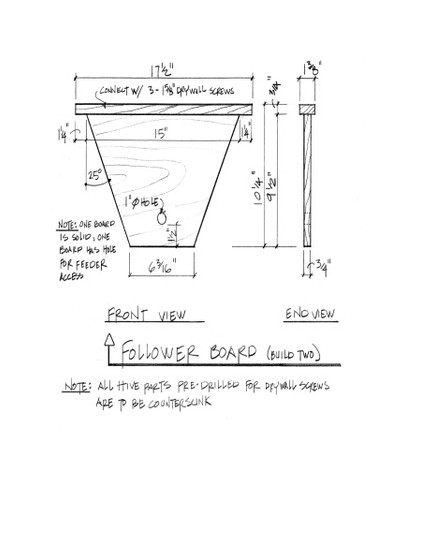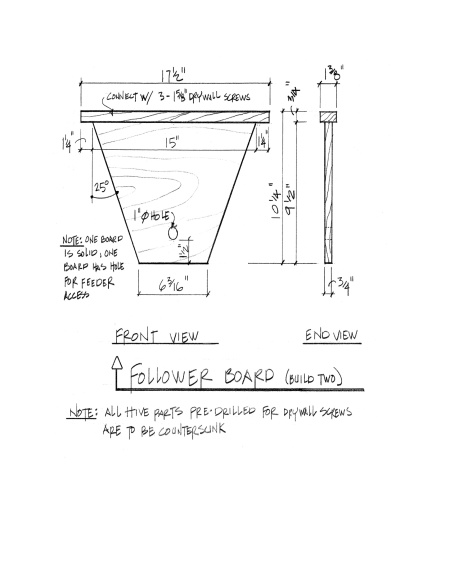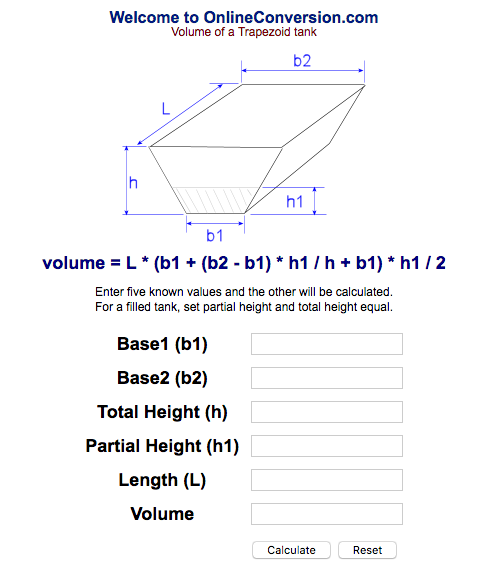Good question... Just how big SHOULD a top bar hive be?
There is often lively discussion on beekeeping forums about the appropriate size for a top bar hive. And frequently this data is given in inches – such as the length of the hive, or in numbers, as in the number of top bars the hive will hold.
But from the bees’ point of view, an important consideration is the VOLUME of the hive. Just how big is the space they are planning to live in? Being able to calculate the volume tells you more about the size of the cavity WITHIN the hive – and since bees are “cavity nesters” – meaning that they will go inside this cavity and create the structure of their nest – the honeycomb – then VOLUME is probably what the bees are concerned with. It doesn’t really matter how tall a tree is, or even how big around it is – if the volume of the hollow cavity inside the tree isn’t large enough for the bees purposes then it isn’t a suitable home.
Now some of us can measure the time since we sat in a geometry class in units called decades, so conjuring up a formula to calculate area or volume might be a bit of a challenge.
Combined with the fact that most top bar hives have sloped sides in an attempt to ask the bees not to build their honeycombs attached to the sides of the box – which creates a trapezoid instead of a rectangle — and now things are really complicated!
Just how do you do the math on a three-dimensional trapezoid?
Well, here’s how it works:
The formula for the area of the trapezoid is this:
A = (( a + b) / 2) x h –> where h is the height, and a and b are the lengths of the parallel sides, in other words, the top and bottom.
When you have that number, the area, you multiply it by the length of the inside of the hive, and voila – now you’ve got the volume of your top bar hive.
So if we were to calculate the area of a Gold Star Top Bar Hive – it would look like this. We are showing here the dimensions of our “follower board”, since that exactly matches the interior size and shape of the hive body itself.
Follower Board
a = 15 inches
b = 6.1875 inches
h = 9.5 inches
Note: The decimal equivalent of 3/16 = .1875. This makes the math easier. (For some of us, fractions were a long time ago too!)
So, a + b would be 15 + 6.1875 = 21.1875 inches.
Then you would divide 21.1875 by 2. This will get you 10.59375
Multiply that by 9.5 and get 100.64. This figure is square inches – the area of the trapezoid, i.e. the follower board.
Then, to get the volume, you multiply the area 100.64, by the length of the interior of the hive. A Gold Star hive is 44.5 inches long inside, and voila` – now you know that the volume of the cavity inside a Gold Star hive is 4478.5 cu inches.
Now we think that’s a lot of math, and apparently somebody else did too, because some kind and smart person made it much easier – by creating an on-line calculator that will do the math for you – all you have to know is the dimensions of your trapezoid.
Much easier!
http://www.onlineconversion.com/object_volume_trap...
This calculator works to calculate a “partially filled tank”, so for a “filled tank”, or your empty top bar hive body, you would set the partial height (h1) and total height (h) as the same number.
So gather up your dimensions, plug them into the Online Conversion calculator and then you’ll know a bit about what the bees are looking at when they look at your hive!
=======================
Does this attitude match up with yours?
Check us out at www.goldstarhoneybees.com. We do top bar hives exclusively, in appreciation of the beauty and the importance of natural beeswax- for the bees.
We’ve been looking for you – and we'd be proud to be a part of your beekeeping journey.
This blog post was originally published on Honey Bee Heroes, and was written by Christy Hemenway, owner of Gold Star Honeybees. Reposted February 2017.



